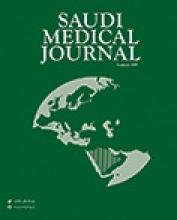Abstract
OBJECTIVES: To investigate the safety of laparoscopic intervention for diagnosis and treatment at 8 mm Hg pressure in one-hour period on acute peritonitis related intra-abdominal sepsis model.
METHODS: In this study, we included 32 female Wistar-Albino rats, weighing 250 ± 20 g, and divided them into 4 groups. This study was conducted in Istanbul University Experimental Medical Research Institution (DETAE) laboratory from April to May 2009. Intra-abdominal sepsis was created with intraperitoneal (i.p.) one mL (109 CFU/mL) Escherichia coli (E. coli) injection, and pneumoperitoneum was formed with CO2 insufflation at 8 mm Hg pressure for one hour i.p. The rats were administered with: Group 1 - one mL i.p. isotonic saline; Group 2 - one mL i.p. isotonic saline + pneumoperitoneum; Group 3 - i.p E. coli; and Group 4 - i.p. E.coli + pneumoperitoneum. Data were analyzed using the Statistical Package for Social Sciences version 15 for Windows (SPSS Inc, Chicago, IL, USA).
RESULTS: Fever and leukocyte values were considered high in Groups 3 and 4 compared with Groups 1 and 2 (p=0.001). The administered reproduction ratio of the E. coli strain was determined as 0% in Groups 1 and 2, and 100% in Groups 3 and 4.
CONCLUSIONS: In this study, as pneumoperitoneum was formed for one hour at 8 mm Hg pressure, in case of intra-abdominal derived sepsis where emergency intervention is needed, we consider that laparoscopic approaches with low pressure may be used safely for diagnosis and treatment.
- Copyright: © Saudi Medical Journal
This is an open-access article distributed under the terms of the Creative Commons Attribution-Noncommercial-Share Alike 3.0 Unported, which permits unrestricted use, distribution, and reproduction in any medium, provided the original work is properly cited.






